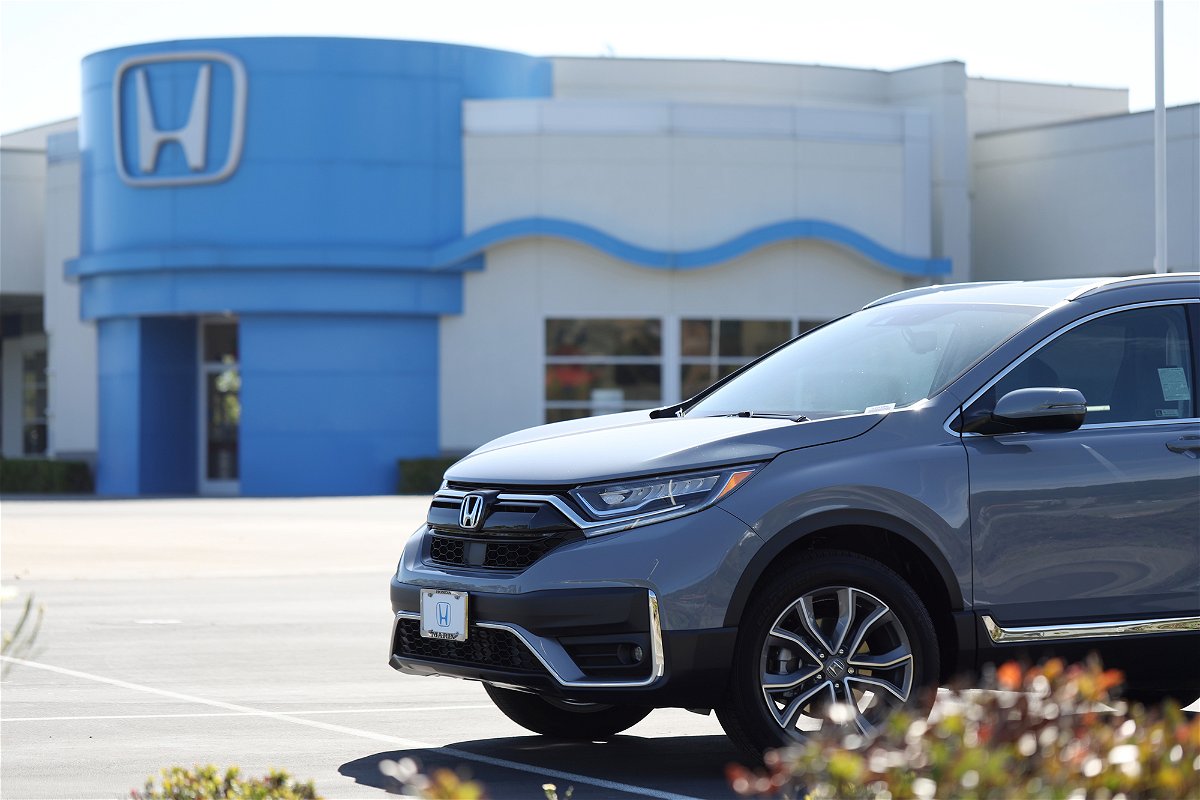Auto sales are falling — but profits are surging. Welcome to the new normal

By Nicole Goodkind, CNN
The US auto industry just posted its worst sales in more than a decade — but that’s not necessarily a bad sign for the sector.
What’s happening: 2022 was the worst year in more than a decade for the auto industry, largely because manufacturers couldn’t keep up with consumer demand.
Supply chain issues and a shortage of crucial semiconductor chips, coupled with high interest rates and low inventory sent car sales tumbling. Only 13.7 million vehicles were sold in 2022, a drop of 8% from 2021 and the lowest total since 2011, according to research firm Wards Intelligence.
To put that into historical perspective, auto sales topped 17 million each year between 2015 and 2019, before Covid.
Stellantis, the parent company of Chrysler, Dodge and Jeep, saw US sales fall by 13% in 2022. Honda saw a 33% drop and Nissan reported a 25% drop. Toyota, the largest automaker in the world, said US sales dropped by about 10%.
On face value, this seems like very bad news. But the auto industry saw sky-high profits even as sales plummeted. Domestic manufacturers of cars and car parts saw a profit of $32 billion through the third quarter of 2022 (the latest data available) — their largest profit since 2016. Car dealerships also reported record-breaking profits through Q3, according to auto-retail advisers Haig Partners.
That’s because pandemic-era pent-up consumer demand remained strong as supply shifted, allowing automakers to increase their prices and their profit margins. Cars and trucks were sold nearly as soon as they hit dealership lots, and the average price paid for a vehicle in December soared to a near-record high of $46,382, according to J.D. Power.
Data from the Labor Department’s November Consumer Price Index shows American consumers are paying about 20% more for cars than they were in 2019.
The trend could continue into next year — research website Edmunds expects new-car sales to hit 14.8 million in 2023, a marginal increase from last year but well below pre-pandemic levels.
The auto industry has entered a new era: Less choice, higher prices and larger profit margins. So far it seems to be working for them.
Market upside: Analysts see 2023 as a strong year for the industry. Earnings per share for auto companies listed in the S&P 500 are forecast to grow by 55% through the year, according to FactSet data.
“The auto sector is rebounding, and car prices are flattening out as normalizing supply factors lift production, inventories, and sales from depressed levels,” wrote Francis Scotland, director of global macro research at Brandywine Global Investment Management.
In a note this week, Bank of America analysts gave buy ratings to Ford, GM, Ferrari, Lucid Motors and Rivian based on their latest earnings estimates.
Wall Street worries: But the latest University of Michigan survey showed that consumers are cautious on purchasing a vehicle in the current environment, with high prices cited as the primary factor.
Rising interest rates, inflation and a potential recession could push prices out of reach for Americans and limit demand for vehicles, the survey said.
And financing a vehicle is growing more expensive than ever for consumers. One major consequence of the increase in rates is that auto loan rates are now at the highest level since 2010, which could put pressure on demand and prices.
Gloom and doom ahead, says the World Bank
As political and business leaders prepare to convene in Davos next week to discuss the global economy, economists at the World Bank said they are feeling pessimistic, forecasting more gloom ahead, reports my colleague Julia Horowitz.
The World Bank slashed its 2023 global growth forecast by nearly half, from 3% to 1.7%, in a new report this week.
“The crisis facing development is intensifying as the global growth outlook deteriorates,” World Bank President David Malpass said in a statement.
Elevated inflation, aggressive central bank policy, deteriorating financial conditions and shock waves from Russia’s invasion of Ukraine are all weighing on growth, said the report.
As a result, “further negative shocks” — from higher inflation and even tighter monetary policy to an uptick in geopolitical tensions — could be enough to trigger recessionary conditions, according to the World Bank.
The organization said it expects the US economy to grow by just 0.5% in 2023.
Gold is surging as investors bet rate hikes will slow
Gold is having a moment as investors bet that inflation will continue its downward trajectory and the Federal Reserve’s aggressive rate hikes will soon come to an end.
Gold futures were at an eight-month high on Wednesday, climbing 14% since late November to hit $1,882 per ounce, reports my colleague Anna Cooban.
Investors tend to flock to assets that offer regular returns, such as government bonds, when interest rates are rising. Gold prices slumped in April last year when the Fed started to jack up interest rates in its bid to tame runaway inflation.
But the market is increasingly expecting the Fed to pull back on those rate hikes as consumer prices increases slow, boosting demand for gold.
Despite the optimism among investors, the Fed has not indicated a shift in policy. Minutes from the central bank’s December meeting, released last week, stressed that “substantially more evidence” was required for it to “pivot” away from its path of further rate hikes.
The-CNN-Wire
™ & © 2023 Cable News Network, Inc., a Warner Bros. Discovery Company. All rights reserved.